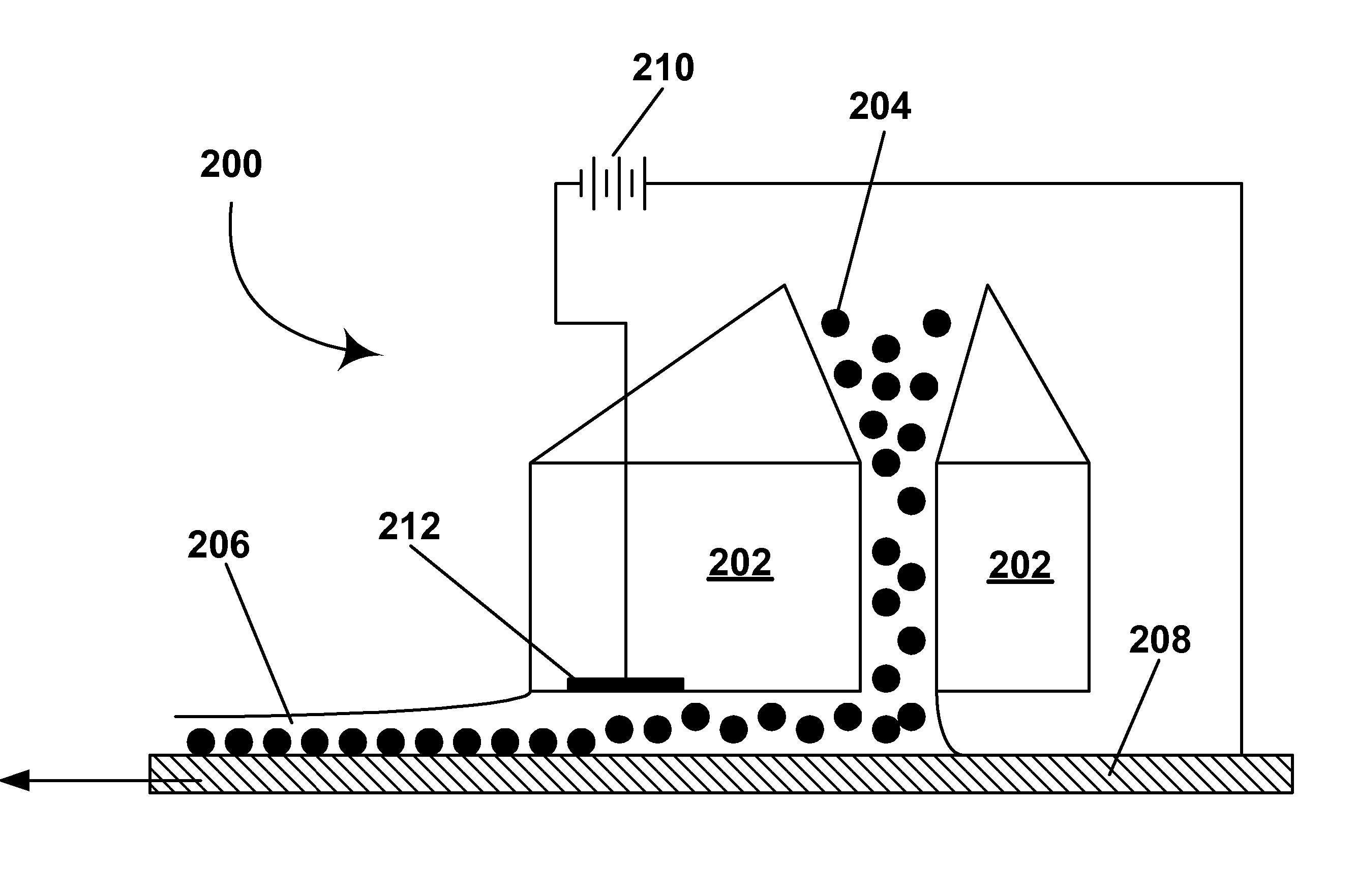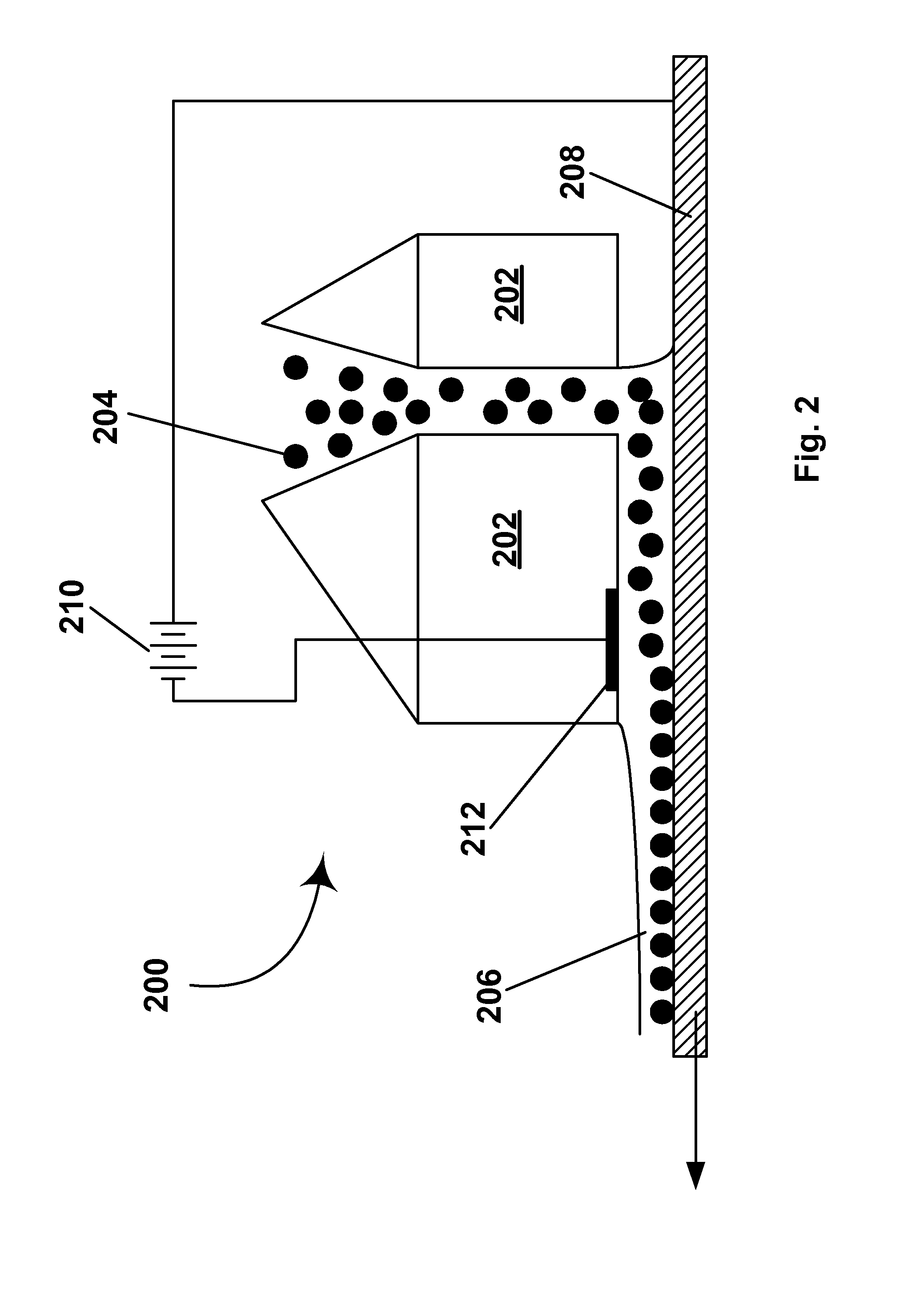Processes for the production of electrophoretic displays
- Summary
- Abstract
- Description
- Claims
- Application Information
AI Technical Summary
Benefits of technology
Problems solved by technology
Method used
Image
Examples
example 1
Electrophoretic Deposition of Microcapsules
[0159] Preliminary experiments were conducted to determine the zeta potential of several different gelatin coacervates in water (coacervate nomenclature: GA=gelatin-acacia, G-PAA=gelatin-polyacrylic acid, G-HMP=gelatin-hexametaphosphate) as a function of pH and the results are shown in FIG. 10. For the GA coacervate, it was found that, as pH increased, coacervates formed from equal weights of gelatin and acacia become increasingly negatively charged. It appeared likely that adjusting the ratio of gelatin to acacia would affect the pH of zero charge, approximately 3.5 for the GA shown in FIG. 10, and also the plateau value of zeta potential at high pH.
[0160] Electrophoretic deposition experiments were then conducted using the vertical apparatus of FIG. 9A with glass coated with ITO (glass / ITO) for both the substrate and counter-electrode and capsule slurries with 0.05cb=0). At low pH (5.5, capsules were found to deposit only on the positiv...
example 2
Effect on Deposition of Electrode Material
[0162] The electrophoretic deposition experiments of Example 1 were repeated using glass / ITO, poly(ethylene terephthalate) (PET) / ITO, platinum, chrome, and copper substrates. In all cases, coatings were achieved by adjusting slurry pH and / or the encapsulation conditions, but all coatings without binder were typically limited to less than monolayer coverages of 65-80% after washing. This list of electrode materials on to which capsules can be electrophoretically deposited and adhered is not comprehensive; many more materials could presumably be coated by adjusting slurry pH, or capsule chemistry to promote the electrochemistry with a particular surface material that results in adhesion. The surfaces used were not intentionally patterned in any way to aid deposition; however, it was observed that in some cases apparent defects on the surface were preferentially coated with capsules (fabrication of patterned coatings is discussed in Example 9 ...
example 3
[0163] As already noted significant electrochemical degradation of the positive electrode (deposition substrate) was observed to occur with certain electrode materials; this was most evident with substrates where a very thin conductive layer was deposited onto a nonconductive support, for example ITO on PET or chrome on glass. It was found that significant electrode degradation could interrupt the deposition process or cause highly laterally non-uniform coatings to develop. Generally as deposition proceeds, for example at constant voltage, electrochemical degradation can be recognized as a rapid decrease in current (vice versa for constant current conditions). Note that at constant current (with a suitable high voltage current source) deposition and electrochemical process proceed until the electrode fails catastrophically, whereas at constant voltage, the deposition process and degradation slow down as the experiment proceeds because the current drops of...
PUM
| Property | Measurement | Unit |
|---|---|---|
| Length | aaaaa | aaaaa |
| Electric potential / voltage | aaaaa | aaaaa |
| Width | aaaaa | aaaaa |
Abstract
Description
Claims
Application Information
 Login to View More
Login to View More - R&D
- Intellectual Property
- Life Sciences
- Materials
- Tech Scout
- Unparalleled Data Quality
- Higher Quality Content
- 60% Fewer Hallucinations
Browse by: Latest US Patents, China's latest patents, Technical Efficacy Thesaurus, Application Domain, Technology Topic, Popular Technical Reports.
© 2025 PatSnap. All rights reserved.Legal|Privacy policy|Modern Slavery Act Transparency Statement|Sitemap|About US| Contact US: help@patsnap.com



